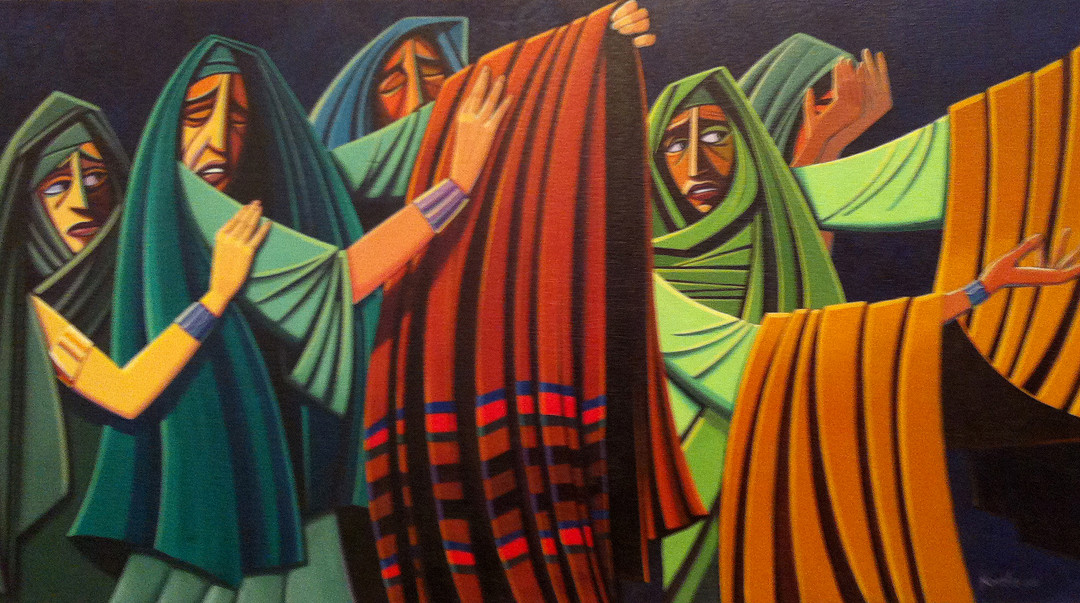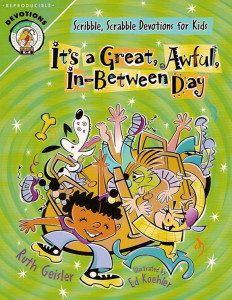All the widows stood beside him weeping and showing tunics and other garments that Dorcas made while she was with them.
There isn’t a lot of detail about Dorcas (also called Tabitha) in Luke’s narrative in the Acts of the Apostles. In addition to being a fine craftswoman, she was “full of good works and acts of charity”. Her skill was likely considerable, since people don’t highlight shoddy work at funerals. Visitation displays show off mom’s beautiful needlework, not her burnt casseroles.
I serve as an elder in my church and I attend a fair number of funeral home visitations. Perusing the flowers and displays, I like to take in the pictures, artifacts, and handiwork that tell me about that person’s life and dignity. I’ve admired photos of an Air Force pilot, a Marine Corp Korean War vet, and a WWII Navy machinist’s mate. A collection of knitted works honored Madeline, who year after year faithfully presented each new baby in our congregation with a personalized Christmas stocking. My father’s favorite United Auto Worker’s cap was proudly placed among the beautiful flowers.
I’m fascinated by this Luke’s reference to Dorcas’ garment making. It’s not the main thing in the story. The main event far surpasses anything else that happened that day. You can read it in Acts 9:36-43. When I painted Remembering Tabitha (shown above), I wanted to depict hard grief refusing to accept the incongruity of a gentle life cut off by mean death.
I mostly focused on her life’s work.
Sometimes we demean our work. I recently led a group discussion which opened with an icebreaker about ourselves. The only rule was that we couldn’t talk about our work. I get it; we tend to justify ourselves by our achievements. But we may over-correct by belittling our work as drudgery to be endured for our daily bread.
This shouldn’t be. Our life’s work (if lawful) is noble and says much about us. Dorcas’ work brought joy, I’m pretty sure about that. It was what the mourners celebrated. Maybe she gave textiles away (her good works; acts of charity), or taught younger women to weave. I like to think she loved making garments and that others loved seeing them. The untimely halt to her good work was simply too hard to bear.
When God completed his work of creation he looked at it and pronounced it very good. Later, when God recounted for Job his awesome creation (chapters 38-39) , he built an exciting crescendo celebrating his work. There is looseness, freedom, and wildness depicted in that account. It’s an exciting read. God’s work is an exciting thing.
I often tell those interested in humorous illustration that my best days are when I’m laughing while I draw. I have moments when my work cracks me up. In those moments, I’m not hyper-focused on the technicalities of line, value, composition, color theory and such. I’m just having a wild, good time. This book cover reflects one of those times. The assignment called for a treacherous playground ride filled with danger, mayhem, sickness, health, and wild fun.
The dog made me laugh out loud as I drew him. Doesn’t he looks unhinged? So does the maniacal spinner of the wheel. My point isn’t that I’m the funniest artist I know, but that it’s really good when I feel the freedom to let my creativity get a bit out of hand.
Something tempts me to avoid wild work and to play it safe; to just crank it out. Or to slack off and not do anything at all. These are the worst days. Work avoidance never brings satisfaction. Well earned rest and relaxation does, and that’s a good thing, but work pushed out the door, satisfying only the bare requirement, never brings joy, only a paycheck.
My clients and I should expect more.
My work is not the total sum of my life, but I hope it’s not dismissed as simply what I did to put food on the table. I’m sure Dorcas had many other good qualities that brought bittersweet memories, but those garments got the notice of keen observer Luke. Was she supposed to continue making more? Was her death an untimely interruption to her work?
The story continues with Peter raising Dorcas from the dead. The immediate and primary purpose of that miracle was to verify the truth of the Gospel of Jesus Christ. Luke did, however, take a moment to mention her industry. I speculate that one of the benefits of her restored life was that she got to continue her work. She would go on to die again, but maybe her second visitation displayed an even greater body of work. Her mourners would know for sure that this was not the end of Dorcas. They would no longer grieve as those without hope. Dorcas and her work, like God’s creation itself, are not destined to be eternally forgotten.
I think that some wild day there will be pleasant work that won’t even draw a paycheck, only a smile. And that is very good.
Remembering Tabitha Acrylic on Birchwood Panel ©2008 Ed Koehler
It’s a Great, Awful, In-Between Day ©1999 Concordia Publishing House


